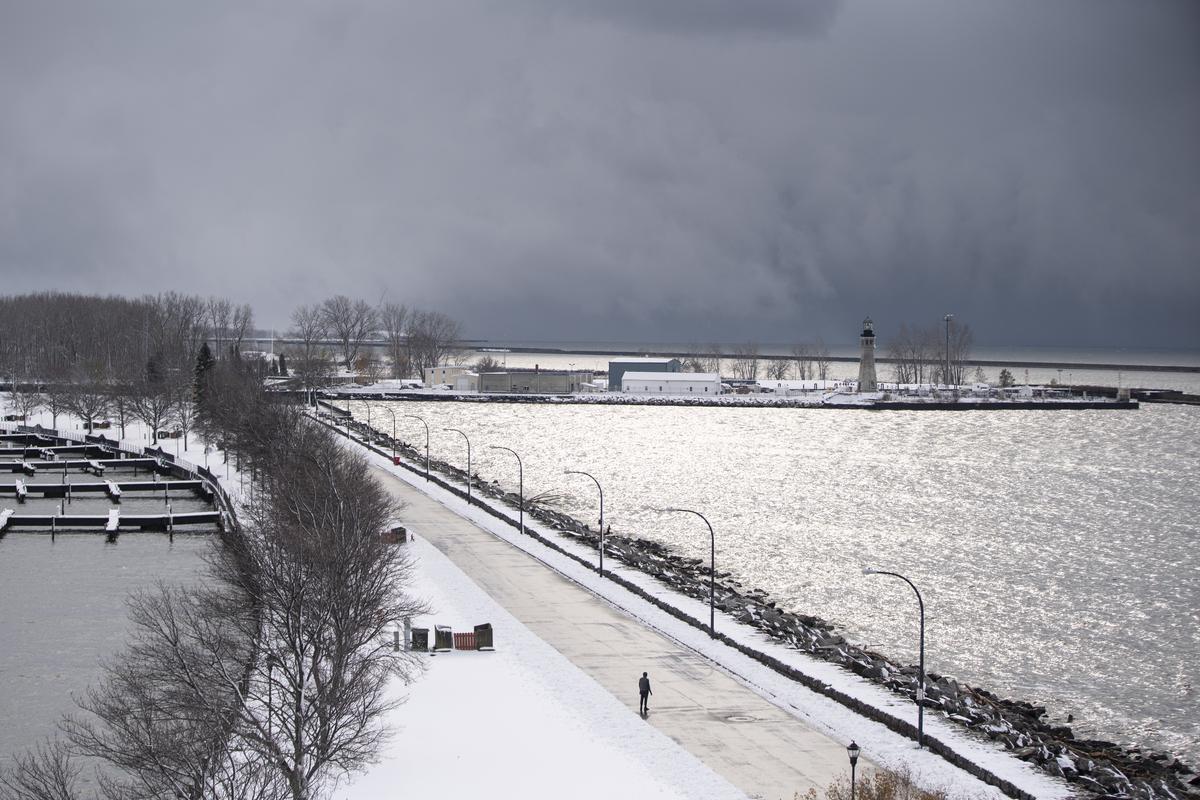What is lake-effect snow?
Context
-
It’s hard for most people to imagine more than 4 feet of snow in one storm, like the Buffalo area was forecast to get this weekend, but these extreme snowfall events happen periodically along the eastern edges of the Great Lakes.
-
The phenomenon is called “lake-effect snow,” and the lakes play a crucial role.
-
It starts with cold, dry air from Canada. As the bitter cold air sweeps across the relatively warmer Great Lakes, it sucks up more and more moisture that falls as snow.
How dry air turns into snowstorms
- Lake-effect snow is strongly influenced by the differences between the amount of heat and moisture at the lake surface and in the air a few thousand feet above it.


Photo Credit: AP (The Hindu) - A big contrast creates conditions that help to suck water up from the lake, and thus more snowfall. A difference of 25 degrees Fahrenheit (14 Celsius) or more creates an environment that can fuel heavy snows.
- This often happens in late fall, when lake water is still warm from summer and cold air starts sweeping down from Canada.
- More moderate lake-effect snows occur every fall under less extreme thermal contrasts.
- The wind’s path over the lakes is important too. The farther cold air travels over the lake surface, the more moisture is evaporated from the lake. A long “fetch” – the distance over water – often results in more lake-effect snow than a shorter one.
- Once the snow reaches land, elevation contributes an additional effect. Land that slopes up from the lake increases lift in the atmosphere, enhancing snowfall rates.
- This mechanism is termed “orographic effect.”
- The Tug Hill plateau, located between the lake and the Adirondacks in western New York, is well known for its impressive snowfall totals.
- In a typical year, annual snowfall in the “lee,” or downwind, of the Great Lakes approaches 200 inches in some places.
- Lake-effect snowfall in the Buffalo area is typically confined to a narrow region where the wind is coming straight off the lake. Drivers on Interstate 90 often go from sunny skies to a blizzard and back to sunny skies over a distance of 30 to 40 miles.
Reference: TH
Visit Abhiyan PEDIA (One of the Most Followed / Recommended) for UPSC Revisions: Click Here
IAS Abhiyan is now on Telegram: Click on the Below link to Join our Channels to stay Updated
IAS Abhiyan Official: Click Here to Join
For UPSC Mains Value Edition (Facts, Quotes, Best Practices, Case Studies): Click Here to Join
